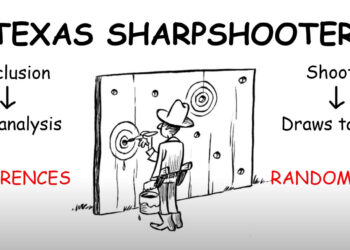 One form that the sharp competition in journals publishing takes is spirited auctions for the rights to the publications of professional societies. The head of a scientific society sometimes stumbles into this situation like a yokel coming into the big city for the first time. “They are really proposing to pay us that much? And with all these guarantees????” Yes, it is surprising to see what the commercial value of highly specialized research publications has become. The reason for this is that the largest publishers know very well what the prize is and how to get it: access to the collections budget of academic libraries, whose door opens widest for the biggest entrants. How better to bulk up a publishing portfolio than by acquiring the publishing rights to established scientific societies?
One form that the sharp competition in journals publishing takes is spirited auctions for the rights to the publications of professional societies. The head of a scientific society sometimes stumbles into this situation like a yokel coming into the big city for the first time. “They are really proposing to pay us that much? And with all these guarantees????” Yes, it is surprising to see what the commercial value of highly specialized research publications has become. The reason for this is that the largest publishers know very well what the prize is and how to get it: access to the collections budget of academic libraries, whose door opens widest for the biggest entrants. How better to bulk up a publishing portfolio than by acquiring the publishing rights to established scientific societies?
It’s useful to recall how we got where we are today. Libraries have done an outstanding job of lowering their administrative costs through various measures. For example, several decades ago the acquisition of library books was made much more efficient by the introduction of approval plans, in which wholesalers preselected the titles a library would acquire. More recently books have become subject to demand-driven acquisition programs, in which the selection of titles is in part influenced by actual usage by library patrons. Another way to reduce handling costs is to reduce the number of vendors. This leads vendors to gobble up other vendors; bigger is better because with scale comes efficiency. This in turn leads us to the Big Deal and libraries’ response to it in the form of consortial purchasing. There is a hidden, or at least unanticipated, cost in reducing the number of vendors, however, in that fewer vendors means bigger vendors and bigger vendors mean greater economic clout. In my experience many librarians remain unaware that they have been complicit in the creation of Elsevier, Springer, Wiley, Taylor & Francis, and the other large firms. The savings in costs today can lead to unwelcome market dominance tomorrow. Librarians may wish to ponder the long-term implications of insisting that more and more publications be made available through GOBI. From such small beginnings do towering giants grow.
These giants face off and fight to get even larger shares of the academic library budget, but now they have come up against a formidable obstacle, the flattening-out of library budgets, which means that any increase in the revenue of one publisher comes at the expense of another. This is the key point and is worth repeating: for one publisher to gain, another must lose. Hence the arms race: I will pay top dollar to obtain the rights to the Journal of Highly Specialized Science and then I will use the inclusion of that publication to justify the price of the aggregations I sell to libraries. But if I will pay top dollar, what will you pay? And if this competition has a half-dozen bidders, how big can the numbers get?
There is a natural limit to the size of the numbers, though, in that you can’t squeeze water from a stone. A library cannot pay whatever the cost even for the finest material if the money has run out. So it’s a big fight for a pie of finite, and perhaps shrinking, size. And if a library has limits on what it can spend, that imposes limits on the publishers that service libraries on what they can invest.
It is sometimes asserted in the world of scholarly communications that big companies can afford to pay more than little companies. If that’s the case, Elsevier, Springer, and Wiley could simply take out their checkbooks and sign up any journal that wanders into their gravitational field. But it’s not really true that Elsevier can pay more than, say, a university press. It’s not a matter of how much you can spend; it’s not a matter of cost: it’s a matter of what kind of return you can get on your investment. So Elsevier can “afford” to spend a million bucks on the Journal of Highly Specialized Science, but if the return on that investment is 5% or even 10%, it may simply not be worth it; and if the return is negative, then the Elsevier management will be scratching their heads, wondering why they are competing for this particular journal in the first place. A bad investment is a bad investment, regardless of how rich the balance sheet is.
This may be where we are getting in the journals auctions: they can’t get much richer without some players dropping out, complaining that the market is overheated. And if more players drop out, then the cost of acquiring these journals will not be subject to bidding wars, suppressing the price paid. Which raises the question: If paying big money is no longer the determinant of how a big publisher will acquire the rights to the publications of a professional society, what will drive the outcome? This doesn’t mean that paying top dollar is not important but that being among the highest bidders is simply the cost of admission.
The competing publishers do of course offer a lot more than simply money. They offer full publishing services, both print and electronic; manuscript submission tools; participation and often the underwriting of editorial conferences; guidance on open access policies; and most importantly, a global footprint to ensure that the content of the journal has maximum distribution. (The global marketing of the biggest players is so effective that the difference in dissemination between them and OA services is marginal.) They also say nice things to the representatives of professional societies–no ego left unstroked–and guarantee editorial independence. But here again, this has now become the cost of admission. To be competitive in the next few years, the bidding publishers will have to do more.
It will be interesting to see what the acquiring publishers come up with now that simply paying more may have reach its limit. It seems probable that eventually all the publishers will seek to bind professional societies more closely to them. And so the board of the Journal of Highly Specialized Science may find that their group has been invited to join Club Elsevier–or Club Wiley or Sage or whatever. As a club member the society will have a new set of benefits, which will serve to tie the members of the society more closely to the society even as the society itself and its publications are more deeply integrated into the hosting parent publisher.
What will those new membership benefits be? And equally important: What benefits can a publisher offer that the competition cannot–what, in other words, will give one company a sustainable competitive advantage? These benefits may be hard or soft. A soft benefit may be to appeal to the nature of the large publisher’s ownership, the thesis being that not-for-profit scientific societies prefer to work with not-for-profit partners. This is one of the reasons that HighWire was so successful over the years (“We would rather work with a unit of Stanford University than the purely commercial firms such as Atypon, Silverchair, and Publishing Technology”). Now that control of Highwire has passed to a venture capital firm, that selling point is gone. But we will continue to see this card played by OUP and Cambridge in their areas of activity and perhaps some of the larger professional societies, which are incorporated as not-for-profits.
Another benefit would be to make selected data analyses of the hosting publisher’s entire portfolio available to the professional societies. This is the opposite of how the information flows today. When a society joins the ranks of Cambridge or Springer, all the activity of that society’s publications is known to the hosting company, but only limited data is passed back to the society. Astute leadership of a society may begin to ask for, even demand more. How does the usage of our publications map to the usage of the portfolio overall? How can that information be used to solicit new members? Can piggybacking on the infrastructure of a large publisher enable a professional society to grow, perhaps at the expense of a society that has no such relationship?
New membership benefits are always a good selling point; societies look for these all the time. Some hosting publishers provide special deals to their participating professional societies–deals such as discounted access to publications. This could go a lot further. Although the analysis that would have to go into such a program is not trivial, we may eventually see a hosting publisher make all its properties available to the membership of the societies that work with it. In effect, by being a member of a society, a researcher would have direct access to a wide range of publications, many of which are not available through that researcher’s individual library. (Libraries, now seeing the large publishers as competing with them, may then feel pressure to make sure all of that publisher’s materials are available through institutional subscriptions.) The law of increasing returns may come to play a role here: If the rich get richer, than the largest publishers will have a better offering for the simple reason that they can make more journals available. This would bring an advantage to the likes of Elsevier and Wiley over their smaller rivals.
Some people may read these musings and respond with moral outrage. That is to no purpose. The economy is impersonal and operates outside judgments about right and wrong; to be amoral is not to be immoral. Understanding how it works, however, can enable an organization to further its aims. Libraries could disrupt these trends tomorrow by insisting that no single vendor provide more than a defined percentage of total expenditures, a percentage that would drop year by year. That would greatly increase costs in the short term, but it would reduce the market power of a small number of publishers (assuming that is deemed to be desirable). There is a reason we call these things trade-offs.
Meanwhile, Welcome to Club Elsevier! We are pleased to host the board of our new partners, the society that publishes The Journal of Highly Specialized Science. After you take a dip in the pool and slip into the Jacuzzi, we will be serving drinks on the verandah.
Discussion
17 Thoughts on "The Arms Race in Journals Publishing Heats Up"
Could you expand on your cautionary note about GOBI (i.e. YBP)? Monograph vendors/jobbers’ profit margins are very slim and the services they provide to libraries are incredibly valuable in terms of staff time saved. Where do you see their growth heading into “towering giant” territory?
Profit margins are irrelevant. Look at Amazon, which now dictates terms for much of the world’s book industry. GOBI is an outstanding service (as is Amazon) and librarians are simply displaying their intelligence in using it. The question is what happens when a chokehold in distribution arises. Once upon a time your cable TV provider was a good guy, and now?
Really? What other alternatives are you suggesting for monograph acquisitions to avoid this doomsday scenario? Buy direct from publisher? Because buying ebook packages is working out to be the way more assuredly dark path. Library relations with monograph vendors have historically been incredibly productive and positive, especially when contrasted to that of publishers. I don’t feel good about drumming up fear of creating a monster to help ensure that relationship continues.
I like the people at YBP. It’s a good operation. But let’s not forget the warm embrace the Big Deal was given at the outset. You have MANY alternatives, but you have to invest and develop them. One of those alternatives is likely to be YBP because their service is excellent. The issue is market share and long-term strategic thinking.
Can you expand on the “may” in this sentence? It’s seems a lot hinges on its conditional nature.
“This may be where we are getting in the journals auctions: they can’t get much richer without some players dropping out, complaining that the market is overheated.”
Do you feel this is happening now, about to happen, will happen in the next five years, don’t know, etc?
Anecdotally, there are signs of shifts in the marketplace, with some participants jumping in deeper and some paddling to shore. Change does not happen rapidly in this space (libraries are slow to move), so the current situation is likely to play out over several years.
Are there any public examples of these “signs of shifts in the marketplace” that you can point to or is everything truly anecdotal at this point?
Another possibility is that commercial publishers are feeling out the potential expandability of the market for Gold OA journals. With the academic library market virtually flat and not likely to expand ever again, there is as yet no sure sign of how expansive the market for Gold OA journals is, since the funding for those will not be dependent entirely (if at all) on library budgets. It may work out, as Richard Poynder’s recent interview with Paul Royster suggests, that the Gold OA market has more upside potential for growth than the library market ever did.
Reblogged this on DailyHistory.org and commented:
Joseph Esposito has a fascinating post on the arms race in the publisher world for rights to academic journals. The arms race is being driven by a desire to secure lucrative contracts with University libraries. Publishers can negotiate better contracts if they have rights to the best journals. Esposito describes how shrinking library budgets have supercharged this market and speculates on what the future of academic journals looks like.



